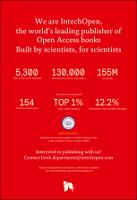Chapter OCT for Examination of Cultural Heritage Objects
Author(s)
Iwanicka, Magdalena
Kowalska, Magdalena
Sylwestrzak, Marcin
Targowski, Piotr
Language
EnglishAbstract
Optical coherence tomography (OCT) was first time reported as a tool for examination of cultural heritage objects in 2004. It is mainly used for the examination of subsurface structure of easel paintings (such as varnishes and glazes) and has also been successfully used for inspection of other types of artworks, provided that they contain layers that are permeable to the probing light. This chapter discusses the last applications of OCT in this area with an emphasis on synergy with some other noninvasive techniques such as large-scale X-ray fluorescence (XRF) scanning and reflective Fourier transform infrared (FTIR) spectroscopy. After this part, there is a detailed description of the high-resolution OCT instrument developed by the authors specifically for the study of works of art. Next, two examples are given for the structural examination of works of art: in the former, the subsurface layers of an easel painting are presented, and in the latter, the painting on reverse of the glass is examined, when the inspection must be carried out through the glass. Finally, an application for the assessment of chemical varnish removal from an easel panel painting is discussed in details.
Keywords
artwork, painting, varnish, heritage science, cleaning of paintingsDOI
10.5772/intechopen.88215Publisher
InTechOpenPublisher website
https://www.intechopen.com/Publication date and place
2020Classification
Engineering: general


 Download
Download